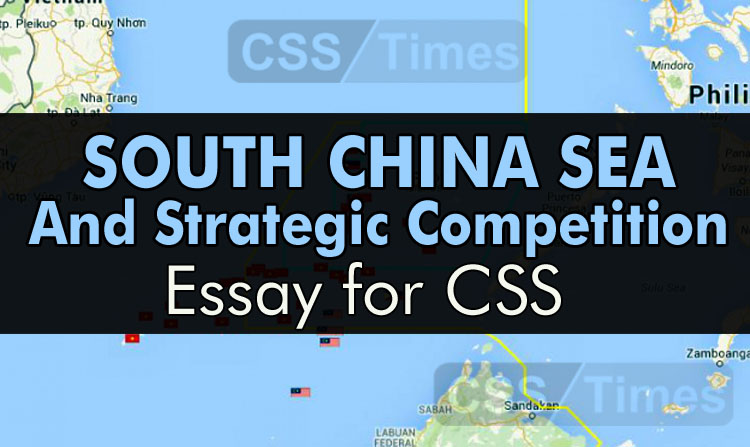CSS Essay Outline: South China Sea And Strategic Competition
This question is included in the CSS syllabus of International Relations,I.Law, Pakistan Affairs ,Current Affairs and US History.It is also helpful in essay.
Robert D. Kaplan in his book, Asia’s Cauldron: The South China Sea and the End of a Stable Pacific,says:“The South China Sea functions as the throat of the Western Pacific and Indian oceans—the mass of connective economic tissue where global sea routes coalesce. Here is the heart of Eurasia’s navigable rimland, punctuated by the Malacca, Sunda, Lombok, and Makassar straits. More than half of the world’s annual merchant fleet tonnage passes through these choke points, and a third of all maritime traffic worldwide.
Bill Hayton in his book,The South China Sea: The Struggle for Power in Asia ,says:“The South China Sea is a crucial link in the ‘global commons’, connecting the Pacific to the Indian Ocean, Persian Gulf and Europe. Right now, along with the East China Sea, it is the most contested piece of sea in the world and one of the main reasons for the current anxiety over China’s intentions.”
China’s Premier Li Keqiang says, “China’s facilities, Chinese islands and reefs, are primarily for civilian purposes and even if there is a certain amount of defence equipment or facilities, it is for maintaining the freedom of navigation,”
I. Geostrategic, geopolitical and geo-economic importance of Water bodies
II. Strategic competition in the South China Sea
A. Important trade route and a busy waterway
Department of Defense report, $5.3 trillion worth of goods moves through the sea every year, which is about 30 percent of global maritime trade. That includes huge amounts of oil and $1.2 trillion worth of annual trade with the United States. Goods worth $5.3 trillion pass through the South China Sea10 percent of the world’s fish trade.
B. Rich in natural resources.
The US Energy Information Agency estimates there are some 11 billion barrels of oil and 190 trillion cubic feet of natural gas reserves under the sea, Its fisheries employ more than 3.5 million people.
